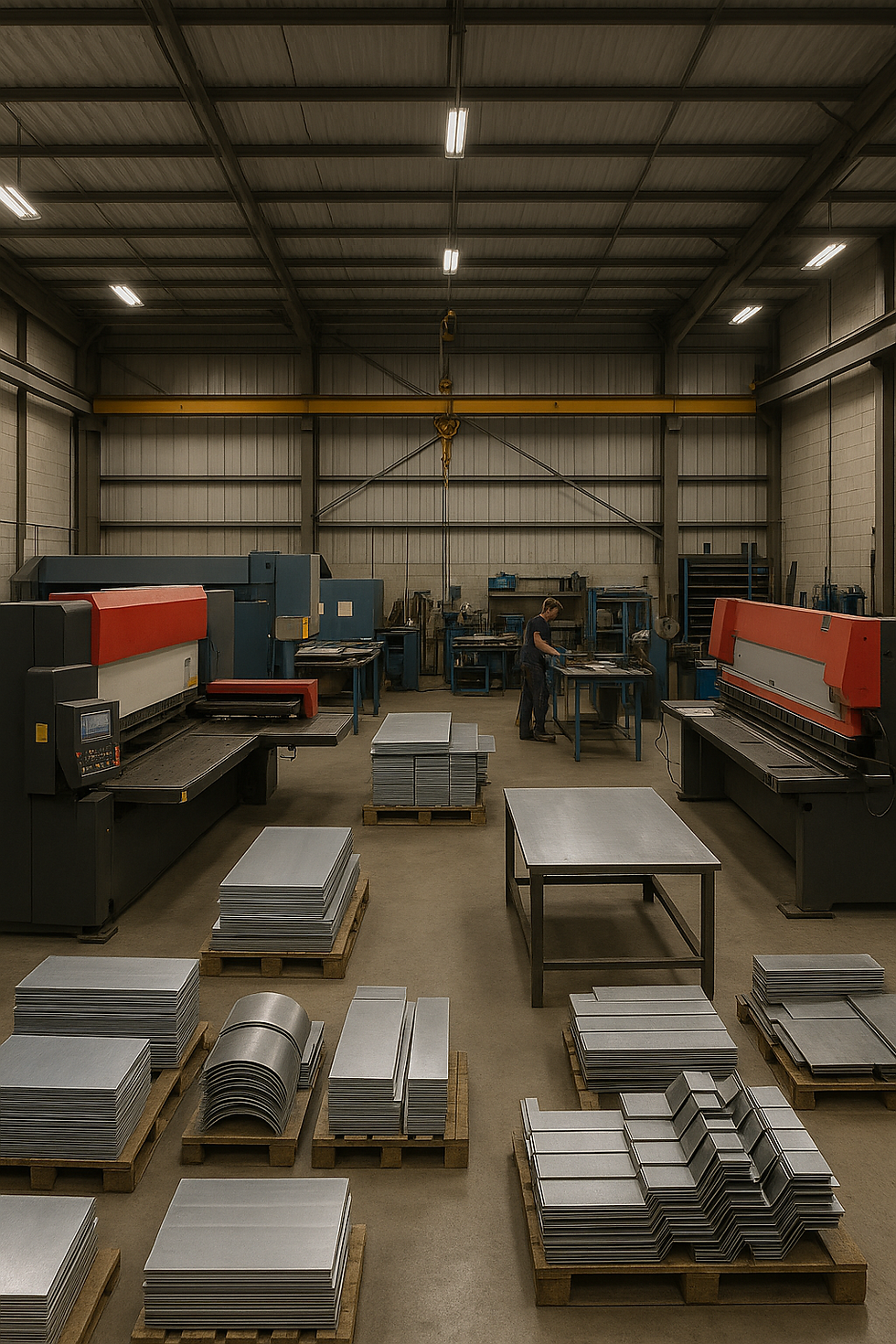Choosing the Right Sheet Metal Fabrication Partner for OEM Projects
- Mefron Technologies
- Oct 9
- 3 min read

For any Original Equipment Manufacturer (OEM), choosing the right sheet metal fabrication partner can have a direct impact on product quality, production timelines, and overall cost efficiency. Whether it’s enclosures for electronic devices, chassis for industrial equipment, or brackets used in automotive systems, sheet metal components play a vital role in structural integrity and functionality.
However, not all fabrication partners deliver the same level of precision, quality control, or design support. Selecting a capable partner requires evaluating more than just pricing — it involves assessing technical capability, process control, and long-term reliability.
Key Matters in Choosing Sheet Metal Fabrication Service Provider
1. Assess the Company’s Technical Capabilities
A strong fabrication partner should have the technical expertise to handle diverse materials (such as stainless steel, aluminum, copper, or galvanized steel) and processes like cutting, bending, punching, and welding.
Look for capabilities such as:
CNC laser cutting and turret punching for precise part geometry.
Press brake bending with tight tolerance control.
TIG/MIG welding and spot welding for durable joints.
Surface finishing options such as powder coating, plating, or anodizing.
Advanced machinery and CAD/CAM integration help ensure that parts are manufactured with consistency from prototypes to large-volume production.
2. Experience in OEM and Industrial Projects
OEM projects often involve custom specifications, mechanical fitment requirements, and long-term supply commitments. Hence, the fabrication partner’s industry experience is a crucial selection factor.
Partners with a history of working with automotive, industrial, and electronic OEMs usually have a better understanding of design documentation, tolerance stack-ups, and assembly integration. They can also provide valuable feedback on manufacturability and design optimization early in the project stage.
3. Design and Engineering Support
An ideal sheet metal fabrication partner doesn’t just follow drawings — they collaborate on design. Evaluate whether the vendor offers Design for Manufacturability (DFM) and Design for Assembly (DFA) inputs.
DFM ensures the part can be manufactured efficiently without unnecessary complexity.
DFA focuses on simplifying the assembly process to save time and cost.
Partners who provide in-house CAD modeling, prototyping, and simulation support help OEMs shorten the product development cycle and reduce the risk of design errors.
4. Quality Management and Certifications
Quality consistency is non-negotiable for OEMs. The fabrication partner should have a well-established Quality Management System (QMS) and certifications such as ISO 9001 or IATF 16949 for automotive manufacturing.
Ask about:
Inspection capabilities: CMM (Coordinate Measuring Machine) or laser-based measurement systems.
In-process quality control: Stage-wise inspection during fabrication.
Traceability systems: Documentation for materials, dimensions, and finishes.
These systems ensure that every fabricated part aligns with design intent and meets required standards.
5. Integration with Other Manufacturing Services
Many OEMs prefer working with partners who can go beyond fabrication and handle end-to-end manufacturing, including assembly and testing.
A sheet metal fabricator integrated with Electronic Manufacturing Services (EMS) or Box Build Assembly Solutions can deliver complete electromechanical assemblies — reducing the need for multiple vendors.
For example, integrating sheet metal fabrication with PCB Assembly Services allows seamless development of enclosures, control panels, and mechanical housings that are ready for electronic integration. This approach saves logistics time, minimizes compatibility issues, and ensures better quality control under a single workflow.
6. Supply Chain and Production Scalability
OEM projects often evolve from prototype runs to high-volume production. The chosen fabrication partner should demonstrate scalability — the ability to maintain consistent quality and delivery timelines even when production volumes increase.
Additionally, check their supply chain management capabilities:
Availability of raw materials and sheet stock.
Vendor network for coatings and surface treatments.
Lead time for custom tooling or fixtures.
A well-organized supply chain minimizes production delays and ensures continuous part availability for OEM assembly lines.
7. Transparency and Communication
Strong communication between OEMs and fabrication partners is essential for long-term collaboration. The vendor should provide clear updates on project timelines, design changes, and quality reports.
Transparent communication during prototyping, production, and inspection phases ensures that potential issues are addressed before they impact delivery schedules.
Conclusion
Selecting the right sheet metal fabrication partner is not just about finding a vendor — it’s about building a partnership that ensures precision, reliability, and efficiency throughout the product lifecycle.
A qualified fabrication partner offers more than manufacturing; they provide engineering support, quality assurance, and process integration that align with OEM objectives.
For OEMs working in automotive, industrial, or electronic sectors, partnering with a company that combines fabrication expertise with Electronic Manufacturing Services, like Mefron Technologies, helps simplify the entire product development process — from design to finished assembly.
By focusing on quality, scalability, and collaboration, OEMs can ensure that their sheet metal components meet global standards and are ready for market deployment.



Comments